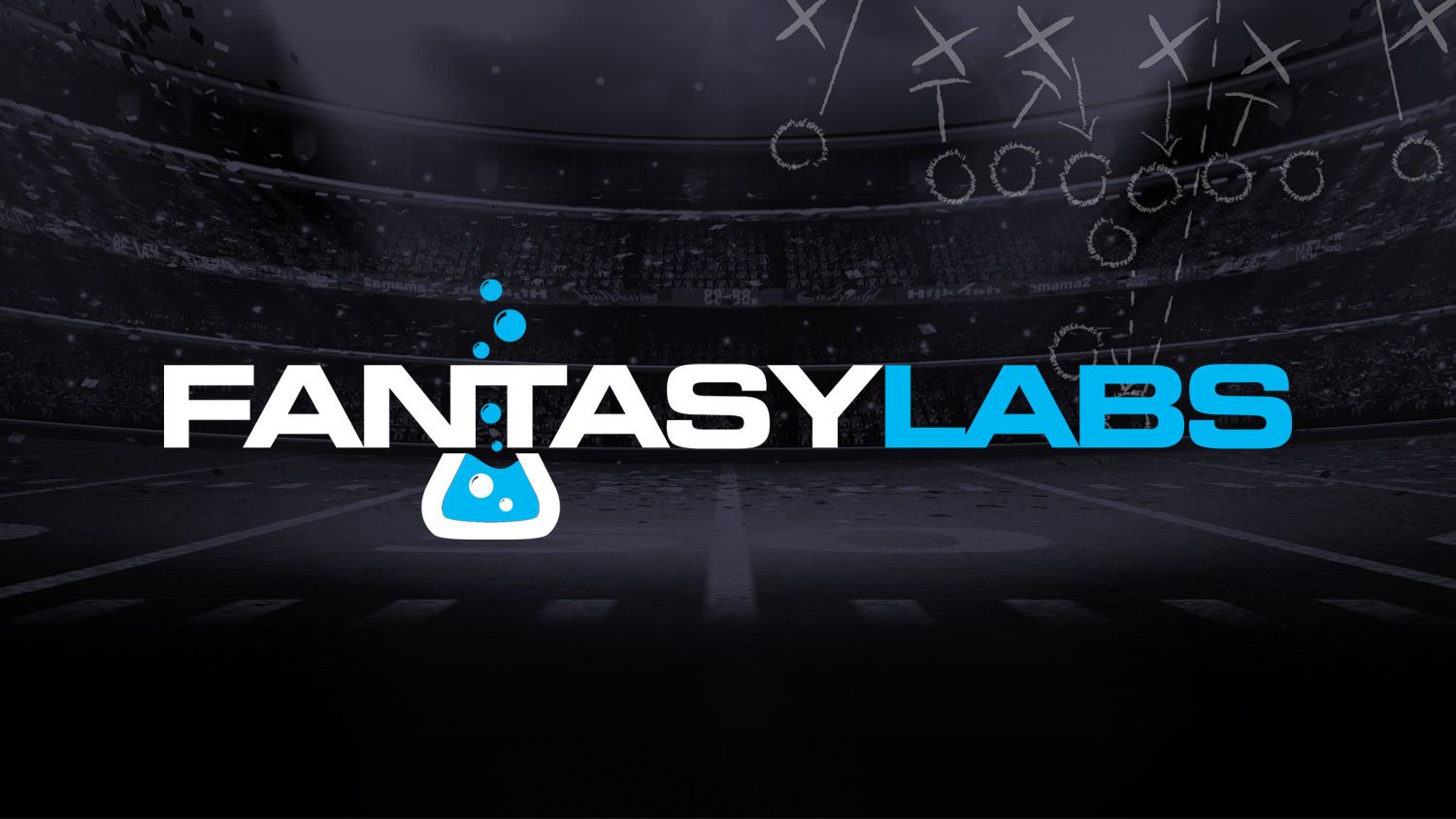As DFS players, we spend most of our time looking forward to the next slate, the next season, etc. Equally important, though, is looking back. Figuring out the thought process that leads to winning lineups is crucial. That’s what makes us better players long term.
Each week in 2022, I’ll look at the winning lineup in DraftKings Millionaire Maker Contest with an eye for how the lucky winner arrived at the lineup that took it down. Rather than going through every position, we’ll focus on key lessons that can be learned — and maybe even some mistakes worth avoiding.
While a high degree of positive variance is necessary to win a contest of this size (the standard $20 contests have over 236,000 entrants, there’s still a large amount of skill involved to get to a position to benefit from that variance.
Here’s Week 7’s winner:

The Lineup
“bamor” is this week’s winner, using just five lineups in the massive contest. While we’ll mostly focus on the winner, we can also examine their other lineups/exposures using the FantasyLabs Contest Dashboard Tool.
The Stack
For the second week in a row, the winning lineup featured Joe Burrow at quarterback. Last week was a one-player stack with Ja’Marr Chase. This week Hayden Hurst joins the festivities as well. Notably, there’s no bring-back from the Falcons’ side of the ball.
Forgoing the traditional bring-back was the choice that took this lineup from good to great. Despite trailing nearly the entire game, Atlanta attempted just 13 passes — not nearly enough to create pass-catcher value. The backfield is also enough of a committee that no single running back is likely to have a good game — Tyler Allgeier lead the way but scored just 11 DraftKings points.
We’ve discussed the relative merits of double vs. single stacks at length in this space, and this week the double stack was clearly the best option. That’s probably more likely to be the case when stacking quarterbacks like Burrow, who score almost all of their fantasy points through the air. Mobile quarterbacks are unlikely to be able to support two pass-catchers in the optimal lineup.
Beyond that, this lineup features a correlation play between Austin Ekeler and Kenneth Walker. While the general logic is that playing opposing running backs is a bad idea, it made sense in this one. First, opposing RB1s actually have a somewhat positive correlation of 0.31 — far stronger than the traditional running back/defense grouping.
Second, these backs in particular benefited from the same game script. Ekeler does the bulk of his scoring in the passing game — which is more likely to happen when the Chargers are behind. Walker is a classic yardage-and-touchdown back. He needs a positive game script to have a big day. His 31.8-point total came without a single catch.
Looking ahead, we have a similar set up in Week 8 with Josh Jacobs and Alvin Kamara. The Raiders being in control of the game would benefit both backs. The combined ownership on them as a stack will be well below what their individual ownership projections would suggest.
The Chalk
bamor ate all the chalk at running back, rostering three with at least 20% ownership — including Jacobs and Walker at well above that. While that’s not generally ideal for tournaments, there was a lot that made this grouping solid. We already discussed the positive correlation and reduced ownership on the Walker and Ekeler pairing.
Additionally, most tournament rosters go with a fourth wide receiver rather than a third running back. This is generally a strong idea, since receivers tend to have far higher ceilings (relative to their median and salary) than running backs. However, all three backs were in excellent spots this week, and their was a lack of high-end receivers worth playing.
Running back production is also far more predictable than at other positions, so we can feel confident that high projections will generally pay off. Managing to get exposure to those projected points while limiting aggregate ownership was the real genius of this play.
Much to my chagrin, bamor also went with the chalk defense option in the Jets. While plenty of other (lesser owned) defenses outscored New York, the salary savings allowed them to fit all of the expensive running backs and Ja’Marr Chase. Notably, Dallas ($4,000) outscored the Jets by 17 points at just 3.3% ownership, but finding the extra $1,400 in salary could’ve messed up other key parts of the lineup
The Sleepers
Mecole Hardman cost just $4,300, and came in at roughly 2% ownership — despite playing a deep-threat role in the league’s most explosive offense. While Hardman’s usage had declined in recent weeks, the Chiefs have publicly stated their desire to get all of their weaponry involved.
I’m not sure if bamor had a strong feeling on Hardman specifically, or just wanted exposure to the Chiefs offense — either way it was a good call. I’m guessing the latter, since this was the only roster they used Hardman, while three of the five featured Juju Smith-Schuster. Forcing a member of the Chiefs passing attack on every roster is likely a plus-EV move moving forward.
Parris Campbell was another receiver who had disappointed this season, but came through in a big way in Week 7. There were signs with Campbell coming into the week though. After topping out at four targets in the first five weeks of the year, he had 11 in Week 6 against the Jaguars, producing a 7/57/1 line.
In Week 7, he turned 12 targets into 10/70/1. A great example of being early on a players breakout, allowing bamor to get 23 points for only $3,900 at 2.6% ownership. Keep an eye on players who’ve seen an uptick in usage — even if the box score hasn’t reflected that yet. That could be a sign of impending breakouts. Campbell was on three of bamor’s five lineups this week.









